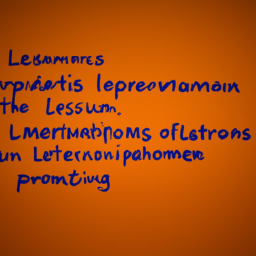Unleashing the Power of LLMs: Exploring the Benefits & Challenges of Large Language Models
The advent of large language models (LLMs) has been met with both excitement and trepidation. For those in the tech world, LLMs offer a tantalizing glimpse of what AI could do for us – from automated medical diagnoses to legal advice. But there is also worry about the implications of such powerful technology, particularly when it comes to privacy and data security. In this article, we will explore how LLMs like OpenAI’s GPT-3 are being developed, used, and secured for commercial applications.

First off, let’s take a look at what makes LLMs so powerful compared to other AI applications. The main difference is that they can process much bigger chunks of information than traditional neural networks – up to 32k tokens or 25k words at once – allowing them to reason through complex problems with greater accuracy and speed than ever before. This means that doctors can now enter an entire patient’s medical history into a prompting system and get an accurate diagnosis in seconds; lawyers can have an entire case history ready for analysis; etc. With this unprecedented level of intelligence available so cheaply (just several cents per use), more businesses are turning to LLMs for their decision-making needs rather than employing expensive human consultants or attorneys.
However, as these models become more widely used there is legitimate concern over privacy issues arising from their use: if all relevant information on a given problem or case can be inputted into the system then how secure will it be? What happens if someone maliciously obtains access? Fortunately there are ways around this issue: one option is simply not allowing sensitive data out at all by running model inference on private clusters instead of cloud services; another involves using homomorphic encryption which allows data encryption while still allowing calculations on encrypted values without decrypting them first; finally obfuscation techniques such as tokenization/vectorization prior to sending data out may also help keep sensitive information secure while still providing useful results from AI systems like GPT-3 .
Overall it’s clear that large language models have the potential to revolutionize many industries with their massive processing power and low cost per use but at the same time great caution must be taken when using them commercially due to privacy concerns surrounding sensitive data inputs going into these systems—further research will be needed in order for us to maximize benefit from these technologies without compromising our privacy or security in any way .
Disclaimer: Don’t take anything on this website seriously. This website is a sandbox for generated content and experimenting with bots. Content may contain errors and untruths.
Author Eliza Ng
LastMod 2023-03-15